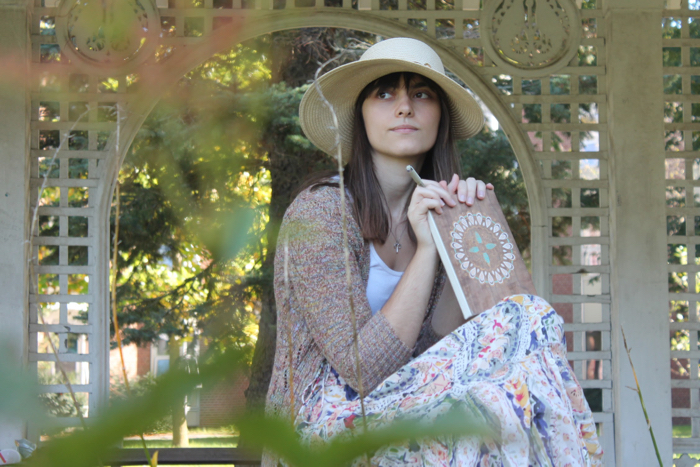by Sienna Tristen
It took me five years to write my debut novel, The Heretic’s Guide to Homecoming, and I credit it with both the total loss and the safeguarding of my sanity.
It would be a different kind of writing, I knew from the start—slower, more introspective, more Socratic than anything I’d attempted before.
I was nineteen years old, ten seconds into my first year of university, and I had a lot of Big Existential Questions with no easy answers in sight. Writing (both fiction and nonfiction) has always been the way I percolate and process my life experience, and so I decided early on to use the narrative as a container for all the wisdom I picked up about confidence and courage and self-compassion.
I think we retain lessons better in narrative form—and I’m fiendishly stubborn and won’t listen to anyone but myself.
I Use My Art as a Way to Encode Wisdom that My Future Self Will Need to Learn
Heretic’s Guide was my emotional atlas for those years, plotting my anxieties, my worries, and my lessons learned. The title of the book is a tongue-in-cheek nod to this: not only is it a novel, it’s also my literal personal guide, a handy compendium of affirmation and motivation that I turn to whenever I’m having trouble feeling anxious or rejected or alone.
When I look at my other writing, the same pattern emerges: I use my art as a way to encode wisdom that my future self, distracted by daily life, will probably forget and need to relearn.
My verse novel The Insomniac’s Assistant (Penrose Press) explored themes of radical compassion and tenderness in the face of frustration and isolation, which is a mentality I strive for every day. The story I’m currently working on is all about challenging faith and making peace with death and mortality—which is timely, given my grandfather just died.
Sometimes art is premonitory that way: I’ll be writing something and all of a sudden, events happen in my life that make the writing a spiritual imperative. It makes me wonder how deep artistic intuitions really run.
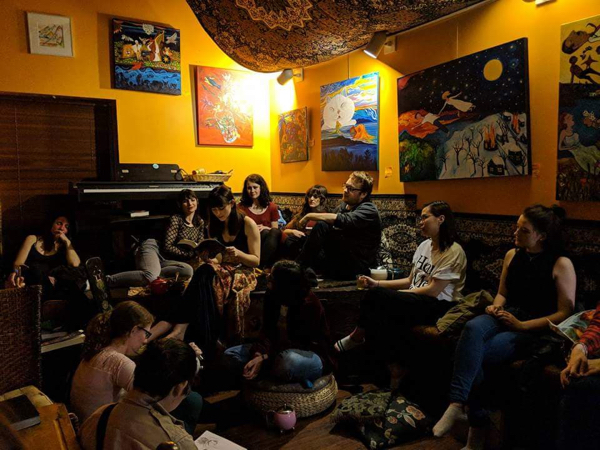
Emotional Challenges Arising from Being a Writer are Solved by Doing More Writing
Because this is the philosophy with which I approach my writing, it happens that any emotional challenges arising from being a writer are solved by just doing more writing.
I have other coping mechanisms, for sure: I’ve had a daily yoga and meditation practice since I was nineteen, and reading other artists’ struggles and suggestions is a surefire way to remind me that we’re alone in this together. (Most recently, I enjoyed Elizabeth Gilbert’s Big Magic. I’m a hundred percent on-board with the concept of sentient creative energies—the creative process is too full of synchronicity to just pop up from The Void.)
But when nothing else is helping to soothe the restlessness or the ennui, I settle in for a long journaling session and work it all out in words. Whatever nuggets of wisdom I sieve from that mental dump usually end up in my fiction later, milestones for a future frustrated Sienna.
You’ve passed this way before, they say, and you can handle the obstacles on the road.
The Physical Challenges of Writing are Solved by Doing Anything But Writing
The physical challenges, funny enough, are solved by doing anything but writing.
For me, there are two modes: Writing and Living. However integral writing is to my fulfillment as a person, I can’t do it when I’m trying to experience life; the writing comes after.
It’s the way I process whatever I’ve lived.
So I look at physical challenges—back pain, headaches, etcetera—as a reminder to go participate in society for a bit. Go outside! Buy a mango at the fruit market and eat it in the park! Climb a tree! Live, for gods’ sakes! You can come back to your manuscript when you’re topped up on your Vitamin D and your lungs are full of fresh air.
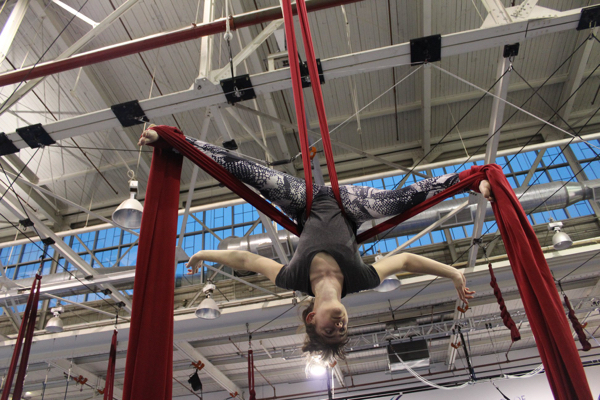
Life as Fodder for Writing
You can flip that around, too, which is a nifty mental trick: Living as fodder for Writing.
Diane Setterfield wrote a novel called The Thirteenth Tale that describes life as a compost heap—you throw all your memories and experiences into the thing and let it break down into a rich organic mulch, then plant a story seed in there and see what grows.
I try to keep that symbiosis in the forefront of my mind, no matter what life is throwing at me. Vacationing in Marseille? Now you can describe the secluded beauty of the calanques! Just got hospitalized for a horrific fullbody rash? That sucks, but think of the hospital scenes you can plot!
Weirdly enough, it takes the sting out of some of the horrors of life; there is no good or bad, only food for the compost.
Writing is the Only Thing that Helps Me Make Sense of the Chaos of Being Alive
I think this mentality is what keeps me true to my path as a writer and an artist. It’s a feedback loop—everything I see or hear or live is destined, eventually, to find its way into a story in some form.
Writing is the only thing that has reliably helped me to make sense of the chaos of Being Alive, and so I write honestly and selfishly and with my whole heart involved.
Actually, I think selfishness is the key to my writing.
Advice for a Young Writer: Be Selfish In Your Creations
One of the toughest challenges an artist has to face is to write what they want, not what they think an imaginary audience will appreciate.
Authenticity shines through, but it can be so tough to access, and tougher still to trust.
Everything I write, I write completely, intentionally, for myself—and then I’m usually baffled when I find out other people needed to hear exactly the same things I did. There are people who have come to me saying my writing literally saved their life, and at that point all I can do is sort of smile and say “mine, too.”
That’s my advice for aspiring writers and artists: be selfish in your creations. Editors will help you to translate all that raw self-expression into meaningful communication, but in the beginning, write to an audience of one.
Take some time to identify what you personally need to read, and then make that thing. No matter how weird and niche your work may seem, there are other people out there who need it, too.
* * *
Sienna Tristen is a writer and artist based out of Toronto. She is the author of multiple-award-winning introspective fantasy novel The Heretic’s Guide to Homecoming, and her first work of poetry, The Insomniac’s Assistant, is available through Penrose Press.
She is one half of The Shale Project, a multimedia storytelling initiative “roughly in the shape of a planet”, dedicated to publishing healing and innovative fiction. A purveyor of many skills and talents, she can also lead a yoga class, play you a tune on violin, speak to you in three and a half languages, fix your website, and climb forty feet in the air on a pair of silks.
If you want to connect with Sienna, you can do so at her website, or find her on Twitter. While you’re at it, check out The Shale Project’s Twitter, too!
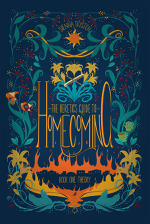 The Heretic’s Guide to Homecoming:
The Heretic’s Guide to Homecoming:
WINNER OF THE 2019 READERVIEWS AWARD FOR FANTASY
WINNER OF THE 2019 IPPY AWARD FOR FANTASY
“Life is transformation. You change or you die.”
Ashamed of his past and overwhelmed by his future, Ronoah Genoveffa Elizzi-denna Pilanovani feels too small for his own name. After a graceless exit from his homeland in the Acharrioni desert, his anxiety has sabotaged every attempt at redemption. Asides from a fiery devotion to his godling, the one piece of home he brought with him, he has nothing.
That is, until he meets Reilin. Beguiling, bewildering Reilin, who whisks Ronoah up into a cross-continental pilgrimage to the most sacred place on the planet. The people they encounter on the way—children of the sea, a priestess and her band of storytellers, the lonely ghosts of monsters—are grim and whimsical in equal measure. Each has their part to play in rewriting Ronoah’s personal narrative.
One part fantasy travelogue, one part emotional underworld journey, The Heretic’s Guide to Homecoming is a sumptuous, slow-burning story about stories and the way they shape our lives.
Available at Amazon, Barnes & Noble, Kobo, and your local independent bookstore.
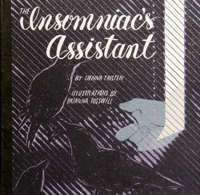 The Insomniac’s Assistant: The Insomniac’s Assistant is a verse novel about the struggles, stresses, and strange joys of the sleepless. In one of the oddest examples of Bring Your Friend to Work Day, follow the protagonist on a typical night of soothing a city to sleep, and experience the magic that creeps into the world in the small hours.
The Insomniac’s Assistant: The Insomniac’s Assistant is a verse novel about the struggles, stresses, and strange joys of the sleepless. In one of the oddest examples of Bring Your Friend to Work Day, follow the protagonist on a typical night of soothing a city to sleep, and experience the magic that creeps into the world in the small hours.
Each vignette is a window peered into late at night, a furtive glimpse between the curtains at the tender battles being fought inside. Sienna Tristen’s debut work of poetry sheds light on all the anxieties, insecurities, and obsessions that keep us up at night—then imagines a presence comforting enough to tame them.
This handmade book measures 5.5″ x 5.5″ and is full of beautiful details. The covers and illustrations are letterpress printed linoleum: all luxurious colours, textures, and patterns.
Available at the Penrose Press bookshop.

